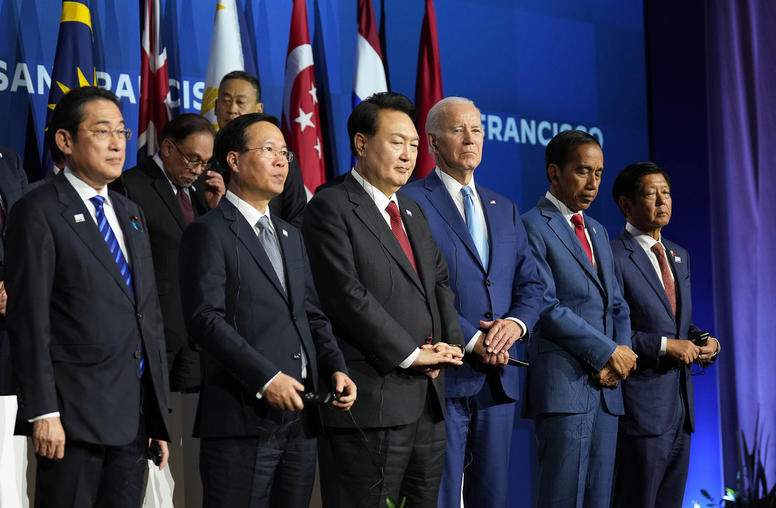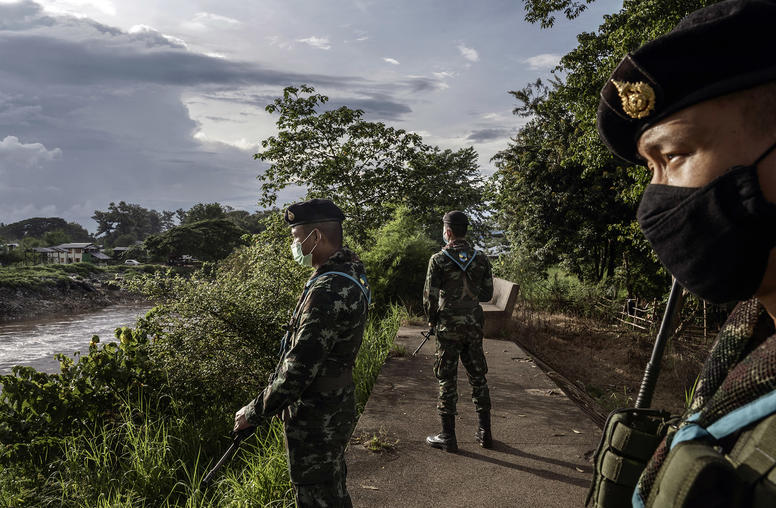Thai Authorities Struggle to Understand a Conflict They Have Been Fighting for Decades
A string of deadly standoffs with Malay rebels strains an already shaky peace process.
In May 2021, Thai security forces were in a three-hour standoff with two Malay-Muslim separatist insurgents in a small remote village in the southernmost border province of Yala. As they stood their ground, the two combatants made video calls to family and friends to bid farewell. Someone began recording one of the calls on another cellphone. Soon, footage of the two men, who were killed in the operation, was circulating on social media.

The video and outpouring of support jolted security officials whose stated goal is to win the hearts and minds of the local Malay Muslim population. The officials wanted to know if the two insurgents had deliberately pursued their own deaths as a publicity stunt, and if the making of video calls would be the start of a new strategy in the conflict.
Days later, a similar situation arose in the Bacho district of Narathiwat province. Outnumbered and outgunned, four insurgents tried to fight their way out of a standoff with security forces. One escaped, one was killed and two were arrested. Then, in late June 2021, security forces surprised two insurgents in a pre-dawn raid on a seaside resort in Pattani province. Again, authorities attempted to convince the insurgents to surrender, using a village imam speaking through a loudspeaker, and again, the combatants opted to fight to the death.
The Barisan Revolusi Nasional (BRN), the separatist movement to which these insurgents belonged, resurfaced in mid-2001 after a decade of relative quiet in a historically contested region of southern Thailand where most of the two million residents identify as Malay and reject the government’s policy of assimilation. Although the BRN is negotiating peace with the Thai government and its powerful military wing is exploring “nonmilitary means” to advance its cause, this streak of deadly standoffs has strained an already tenuous peace process. While the BRN called a unilateral cease-fire in April 2020 in response to the health emergency caused by the COVID-19 pandemic, a relentless Thai military operation eventually forced the combatants to once again take up arms.
A Homegrown Insurgency
Many in the Malay-Muslim community in southern Thailand have long considered self-determination to be a sacred value. Unlike the previous generation of Malay nationalists and guerillas, thousands of whom trained in the Middle East and North Africa during the 1980s, the current generation of insurgents is homegrown. Today’s fighters are quite pious — they observe religious practices, including fasting and praying five times a day. In death, they are buried as shahid, or martyrs, in line with Islamic tradition. But BRN leaders refute comparisons to extremists associated with the Islamic State group (ISIS), al-Qaida or Jemaah Islamiyah (JI).
BRN leaders also refute suggestions that their combatants planned attacks with the express intent to die. While these combatants are unwilling to be captured alive, death has never been the central part of their plan. Rather, their decisions to fight to the death are driven by their fear of abuse and exploitation at the hands of Thai security forces if captured alive. Thai officials often parade combatants who have surrendered before the media, branding them as having been “misled” by the rebels. Observers and relatives of the dead insurgents say the thought of being humiliated by state personnel helps make the choice of fighting to the death that much easier.
From the look of it, the Thai government will go to great lengths to deny the BRN legitimacy — be it through a relentless assault that forced the combatants to break their unilateral cease-fire to denying them their human dignity by forcing the surrendered to recant publicly or turn on their former comrades. What the government does not see, say residents in this region, is that such actions are counterproductive. “They may have killed two insurgents but their handling of the aftermath inadvertently strengthens the BRN’s popularity and recruitment,” said one resident in Krong Pinang district, the scene of the May gunfight, on the condition of anonymity.
Jihad in the Making?
Although the BRN maintains that the conflict is an ethno-nationalist struggle, there is always concern that the insurgency will tap into the global jihadist movement in which religion becomes the banner of struggle. So far, transnational jihadist groups like JI, al-Qaida and ISIS have not made inroads in southern Thailand. Nevertheless, the incursion of radicalism in the Mindanao region of the Philippines and the emergence of JI cells in various pockets of Indonesia, Malaysia and Singapore in the early 2000s are all cause for concern that outside radical ideas could penetrate Thailand as well.
The JI operatives behind the 2002 Bali bombings visited southern Thailand at the height of the movement to seek out potential partners in the region. While these JI cells — most of them were in Indonesia, some in Malaysia and at least one in Singapore, but none in Thailand — have largely been crushed, the global war on terrorism is still far from over. Although transnational jihadism has yet to take root in southern Thailand, fear that it could is not irrational, and a longstanding conflict such as the one involving the BRN creates opportunities for foreign and local jihadists to flourish.
The Prospects for Peace Are Bleak for Now
The conflict in southern Thailand is unlikely to be resolved militarily or via peaceful negotiations in the near future. The fluidity of the BRN’s chain of command makes it difficult for Thai security forces to penetrate and defeat the movement. Cells are organized somewhat independently, and decisions to attack are largely made at the cell level unless the operation requires coordination. These factors help explain why southern Thailand has continued to smolder despite 18 years of constant military presence and operations. Additionally, for much of the past two decades, Thailand has been embroiled in a political crisis that has hampered conflict resolution in the far south.
Although the BRN’s leadership finally agreed to come to the table in January 2020, the pace of peace talks has been slow. The BRN lacks cohesion — the movement’s military wing has expressed concerns about direct negotiations with the Thai government. This has put additional strain on the BRN negotiators to demonstrate that something good can come out of the process. Likewise, successive Thai governments and the military have never been united on a policy for the far south. Government negotiators are caught between the politics of the government of the day and the powerful military that launched two coups in 2006 and 2014. Furthermore, the Thai army has historically opposed negotiations with the separatists as they do not acknowledge the Malays’ grievances, and the government has opposed too much external involvement out of concern that mediation or foreign assistance to the BRN could enhance the rebels’ legitimacy.
Recommendations for How to Get to Peace
A growing number of policymakers suggest that it is time for Thailand to abandon its zero-sum mentality and permit outside help to build the capacity of negotiators on both sides of the conflict. The BRN is eager to work with international organizations and foreign governments as that would help enhance its legitimacy. Such engagement would also provide it opportunities to learn more about international norms, the Geneva Conventions and humanitarian law. However, there remains a question as to who could fill this role and to what extent the Thai government and army would accept outside involvement.
Malaysia is currently “facilitating” the peace talks, but Kuala Lumpur is more of a stakeholder in this conflict as the country shares a common and porous border with Thailand. Kuala Lumpur may respect Thailand’s territorial integrity but there is a great deal of sympathy for the Patani Malays from the Malaysian citizens. As the designated “facilitator,” Malaysia has to tread carefully, as an unexpected incident has the potential to sour bilateral relations. For example, BRN rebels attacked Thai troops, killing one, in early August 2021 in Tak Bai district on the banks of the Kolok River, which marks the official border between Thailand and Malaysia. The rebels were seen in CCTV footage crossing over from the Malaysian side of the river to carry out the attack.
The United States should be concerned about the potential for radicalism to arise in southern Thailand. Thailand’s position as a treaty ally of the United States and a major non-NATO ally makes it, and the Western hotels and embassies within it, a legitimate target in the eyes of global terrorists. The fact that there are many international organizations and countries in Southeast Asia with experience in countering violent extremism may provide an effective starting point for more international actors to offer assistance.
Don Pathan is a Thailand-based security analyst.



